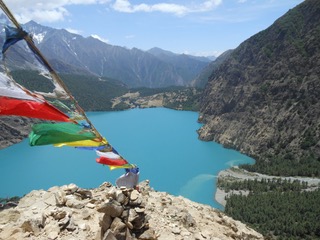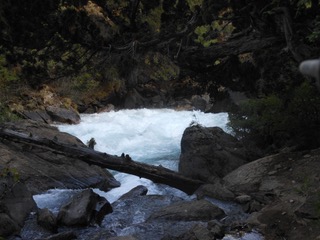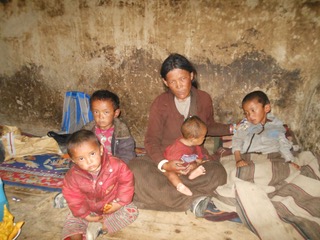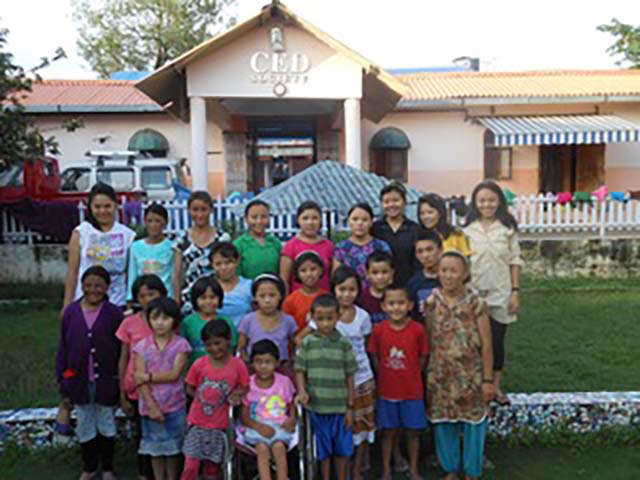Compassion Without Barriers
Jacqueline Kennedy once wrote that her husband John F. Kennedy believed “that one man can make a difference – and that every man should try. He believed so strongly that one’s aim should not just be the most comfortable life possible, but that we should all do something to right the wrongs we see, and not just complain about them.”
An Unlikely Journey

The story began with an unlikely 25-day pilgrimage to the forbidden holy lands of the Nepalese-Tibetan border regions of Upper Mustang and Upper Dolpo (also known as Dolpa) more than twenty years ago when a young man emerged after completing his 13-year monastic studies. Uncertain of his life’s direction as a newly ordained Buddhist monk, Lama Tenzin Choegyal decided to embark on an expedition with his two brothers to rediscover their ancient Tibetan heritage; their mother Tibetan born, their father, Indo-Tibetan. The youngest brother is the Venerable Onchung Tulku Rinpoche (the reincarnation of a high lama from the Kyonda Samdup Ling Monastery of the Chamdo region of eastern Tibet), and the middle brother, Chewang Dorjee.

The three brothers started their adventure at the Himalayas’ foothills but were unprepared for their extreme terrain and conditions. Along the way, the brothers crossed paths with kind strangers who helped sustain them with supplies as they navigated elevations of up to 18,000 feet along the steep and narrow paths through the remote Tibetan villages. Thus, what began as a young monk’s epic adventure to learn more about his Tibetan heritage developed into an ambitious plan to rescue disadvantaged girls from the remote Himalayan villages. Lama Tenzin’s story and that of his girls continue to evolve.
Righting the Wrongs

While trekking through the remote villages of the Upper Dolpo region of the Himalayas, Lama Tenzin and his brothers saw the extreme poverty and heard the heart-wrenching stories of extraordinary hardships. There was much evidence to suggest that time stood still as the people lived according to their ancient culture without the amenities we often take for granted. The austere circumstances struck his heart, mind, and soul. Lama Tenzin was profoundly affected that many of the 12-14-year-old girls he encountered were married, and most shockingly, already mothers. As soon as the young girls were married, they became part of their husband’s family, no longer attached to their biological family. Culturally, the boys were expected to care for their aging parents and were held in higher regard than the girls, thus often receiving education. It was not uncommon for the females to be considered chattel, mere vessels to produce healthy children. Other than life-sustaining practices handed down from generation to generation, there was little to no formal education for the girls as they were not worth the investment. In village after village, Lama Tenzin witnessed extreme malnutrition of the children; some were abandoned and had to fend for themselves. He attentively listened to the girls’ many stories and women’s back-breaking work they endured. Not only did they do most of the arduous farming for the entire family, but they also had to cook and care for the children and animals. After the summer’s harvest and over the six-month winters, the men traveled to the warmer climates to trade their produce in exchange for money to purchase goods otherwise unavailable to them. During the impassable winters, the women had to manage their simple mud and stone huts, where they often dug out from under eight feet of snow. Gathering around the only source of heat provided by yak dung, the family slept and cooked meals on the second level, which consisted of their main room and kitchen. If not in a separate building, the structure’s first level often provided shelter for the animals.
When the time had come for the three Choegyal brothers to return home, the faces of these young girls haunted Lama Tenzin, along with the voices of the mothers’ begging him to take their daughters with him. It was those pleas that echoed in his mind and accompanied him back to his home along the foothills of the Himalayas. Lama Tenzin knew the prayers of a monk alone would not change the austere lives of these desperate girls; he had to do something. So like the Buddha, Lama Tenzin realized his true nature and followed his calling to improve lives through his efforts beyond the monastery walls. The path he was about to take was not the customary direction of a Buddhist monk, but it would shine a light that anyone can accomplish great things if they acted.
Building a Home for Disadvantaged Girls

Once at his family home in Dehradun, India, Lama Tenzin and his brother, the high lama monk, presented their idea to build a home for these disadvantaged girls. At first, his family asked why he wanted to deviate from the accepted path of a monk to serve within a monastery. Then, he described what they saw and the many stories conveyed by the mothers and grandmothers of the villages. The hardships the young girls endured were palpable. So the family did two things: first, Lama Tenzin’s mother donated the land on which to build the home for the children that typically would have been gifted to build a monastery in honor of his brother, the high lama monk, and second, his sister, Pempa, sold the family retail garment business their father had started to provide the seed money (a five-year interest-free loan) for the construction of the home. She recognized that this home would provide a haven, education, and opportunity for the children, but above all, it was the right thing to do.
In the subsequent months and years, the monk made several trips to shepherd small groups of girls and a few boys as young as three and as old as thirteen. Through his fundraising efforts, the unassuming monk built a loving environment and home for the rescued girls and boys and provided private education, clothing, food, and their ongoing needs. He instilled in them self-empowerment, self-reliance, and compassion. The gentle monk taught them that their future was only limited by their dreams and the commitment to finding and working toward living their passions. To date, 33 children have been rescued with plans of more children in the future.
“We won’t always know whose lives we touched and made better for our having cared, because actions sometimes have unforeseen ramifications. What’s important is that you do care and you act.” – Charlotte Lunsford
